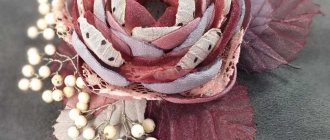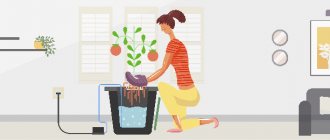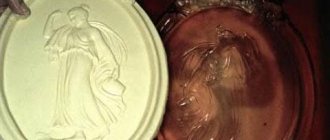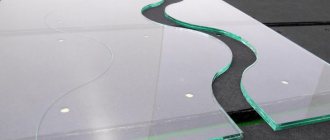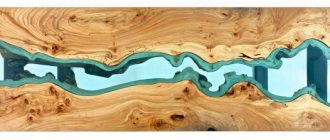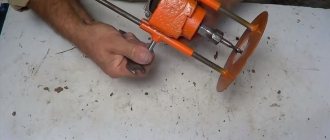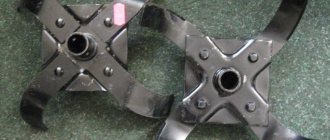Foods like mushrooms are valuable and nutritious foods. At home, growing oyster mushrooms and champignons has become widespread. Such cultivation guarantees the absence of carcinogenic substances and nitrates, which are easily absorbed by mushrooms.
Oyster mushrooms are recommended for use by patients with hypertension, cancer and some others. They slow down the aging process and help rejuvenate.
The article tells you how to grow mushrooms and make oyster mushroom mycelium with your own hands.
What is oyster mushroom mycelium, history of breeding
The mycelium of any mushroom, including oyster mushrooms, is called its vegetative body, in other words, the mycelium, consisting of the finest branched root-threads. The development of mycelium occurs inside the substrate and on its surface. This extensive network can be obtained both at home and using laboratory methods.
In their natural habitat, mushrooms reproduce mainly by spores. In order to answer the question of how to make oyster mushroom mycelium within the walls of the laboratory, scientists tried several different methods.
At first, fragments of mycelium for propagation in greenhouses specially adapted for this purpose were taken from the forest, in places where mushrooms accumulated, and then planted in prepared soil. After it was completely intertwined with mushroom threads, the substrate was dried and ready for breeding. The qualitative characteristics of such material were weak, the mycelium degenerated and produced meager yields.
Later in France they found a way to remove mycelium from mushroom spores under artificial conditions, which was very limited in application and also did not take root.
The latest and generally accepted patented method was the cultivation of oyster mushroom mycelium on the grain of almost any grain crop, sawdust, and straw.
Interesting Facts
- These are the first mushrooms to be grown in an artificial environment.
- Champignons are widely used in cosmetology. Lotions and masks based on these mushrooms are great for helping with skin problems.
- This type of mushroom is used in medicine and is a good aid in the fight against bronchial pathologies and diabetes mellitus types 1 and 2.
- Champignons contain chemicals that relieve headaches, help in the treatment of hepatitis and various forms of tuberculosis.
Methods of growing mushrooms
Oyster mushrooms are very unpretentious mushrooms that quickly produce crops. Already a month and a half after disembarkation, you can make the first collection. From a square meter of plot you usually get about ten kilograms of mushrooms per month.
Several methods can be used to grow this product:
- Extensive. This method imitates natural growth and requires certain areas. Tree stumps are prepared for it, cuts are made in them and first the oyster mushroom caps and then parts of the mycelium are placed in them. The method depends on weather conditions: under unfavorable circumstances, mushroom growth can take three months.
- Intensive. Mushrooms are grown this way, for example, in plastic bags. It is very effective, does not require much labor and is inexpensive.
To grow mushrooms at home, you can get mycelium in two ways: buy oyster mushroom mycelium, the price of which is currently about 150 rubles. per kilo, or make it yourself.
Making mycelium
Oyster mushroom mycelium - mycelium - is planted in the substrate, where it will germinate. At home, you can grow oyster mushroom mycelium on wood or grain with your own hands. Cultivation occurs in three stages as follows:
- Obtaining royal mycelium. It is made in the laboratory from spores and stored in test tubes, or the material is propagated from pieces of mushroom tissue.
- Preparation of intermediate mycelium. At this stage, the mother culture is transferred from the test tubes where it was stored into a nutrient medium, where the basis for the seed mycelium begins to develop.
- Obtaining seed mycelium. The intermediate material is sown into the substrate, where it grows. Parts of this substrate are used to sow the area where the mushrooms will be directly grown.
Tools
To make mycelium from oyster mushrooms, you will need simple tools and materials:
- rubber medical gloves;
- glass bottles with a volume of 250-300 milliliters with a narrow neck;
- sterile cotton wool, gauze and aluminum foil;
- tweezers or sharp knife;
- test tubes (or medicine bottles);
- litmus tests (preferably, but not required);
- pipettes;
- alcohol lamp;
- thermometer;
- nutrient medium (agar);
- UV lamp.
The air in the room is burned with an ultraviolet lamp. This is a mandatory step! The environment contains from 5 to 20 thousand pathogenic microorganisms that can easily enter the grain and destroy the nascent mycelium.
How to prepare the base for planting
To obtain a good harvest, it is necessary to properly prepare the soil for planting. The manufacturing technology requires that for this you need to grind dry and clean husks, straw and husks (barley or wheat), and then heat treat them. These actions will remove from the composition the insects that got into it during collection.
In order to thermally treat the substrate, it is placed in a large metal basin, filled with hot water (70 ° C) and boiled for a couple of hours, after which the liquid is drained and the mass is cooled to room temperature. To check moisture saturation, a small amount of the mixture is squeezed in a fist: for normal humidity (about 70%), little moisture or nothing at all should come out; overmoistening is not allowed.
For growing, both a greenhouse with stumps installed in it and large plastic bags on the balcony at home are suitable. Below we will discuss how to prepare oyster mushroom mycelium at home, plant and grow a mushroom crop. Oyster mushroom is the only mushroom that is easy to grow if all the necessary conditions are met.
Further propagation of mycelium
If the task is to further propagate the champignon mycelium, the contents of the test tubes are added to large jars filled 2/3 with substrate. This procedure also requires sterile conditions:
- a depression is prepared in the substrate contained in the jar, after which it is tightly closed with a metal lid;
- a hole must be made in it, closed with a soft stopper;
- jars prepared in this way are placed in autoclaves for 2-hour sterilization under pressure (2 atm.);
- jars should cool in a sterile room;
- when the temperature drops to 24 degrees, you can add a mother culture of champignons to the substrate.
Manipulations are carried out over a burner flame. Having opened the test tube, a fungal culture is removed from it using an inoculation loop. Quickly removing the cork from the jar hole, insert the champignon mycelium into the recess in the substrate and close the jar.
Oyster mushroom mycelium at home: stage one
To obtain royal mycelium, parts of the fruiting body of fresh mushrooms are taken. The oyster mushroom needs to be divided in half and a small piece cut out from the stem. Then it must be dipped in a solution of hydrogen peroxide for disinfection - the material is ready for planting in a nutrient medium.
Then the treated piece is placed in a container with a nutrient substance and closed with a stopper disinfected by fire. Such home production of oyster mushroom mycelium requires mandatory sterility, therefore, after processing, the material should not be touched with hands, but taken with auxiliary tools; the room must also be kept clean.
A closed container with seedling material placed inside in an inclined position is left in the dark for a couple of weeks.
The nutrient medium in this production can be agar from wort, carrots, oatmeal, potatoes or glucose. After preparation, it is sterilized, poured into containers and waited for it to harden, after which a piece of mushroom is added.
Tools
Fungal mycelium in biology.
what is it, mycelium for growing champignons, oyster mushrooms, chanterelles, porcini To make mycelium from oyster mushrooms, you will need simple tools and materials:
- rubber medical gloves;
- glass bottles with a volume of 250-300 milliliters with a narrow neck;
- sterile cotton wool, gauze and aluminum foil;
- tweezers or sharp knife;
- test tubes (or medicine bottles);
- litmus tests (preferably, but not required);
- pipettes;
- alcohol lamp;
- thermometer;
- nutrient medium (agar);
- UV lamp.
The air in the room is burned with an ultraviolet lamp. This is a mandatory step! The environment contains from 5 to 20 thousand pathogenic microorganisms that can easily enter the grain and destroy the nascent mycelium.
Stage two: obtaining intermediate mycelium
The second stage is the direct cultivation of oyster mushroom mycelium. The technology for producing intermediate mycelium of the oyster mushroom requires the use of cereal grains. For these purposes, healthy, high-quality grains are used, which are boiled for fifteen minutes in a ratio of material and water of one to two. Then the boiled grains must be thoroughly dried and mixed with calcium carbonate and gypsum.
Next, the mixture is placed in glass containers, filling them two-thirds, and sterilized. After processing, pieces of the nutrient medium prepared earlier are placed into the resulting substance. After two to three weeks, when the mycelium has grown, it can be stored, having first been placed in plastic bags. The mycelium can be stored for three months at temperatures from zero to twenty degrees.
Properly prepared intermediate oyster mushroom mycelium with your own hands, which is developed and viable, looks like a lush white coating that has a pleasant mushroom smell.
To plant seed mycelium, perform similar actions, sowing larger containers. To do this, add one spoon of intermediate mycelium to liter jars. This prepares the substrate for further growing mushrooms on it.
Conditions for planting mycelium
You can grow oyster mushrooms in an old barn, stone garage or other suitable room. The criterion for its selection can be considered:
- the ability to create high air humidity, which should be maintained at 85-90%;
- maintaining the ambient temperature around 15-20 degrees - at higher temperatures, the mushrooms stop bearing fruit;
- creating a good ventilation system - the accumulation of carbon dioxide is unacceptable due to the high sensitivity of fungi to it;
- the possibility of sufficient lighting - sunlight without direct rays or fluorescent lamps for nine hours a day.
Mushroom growing technology
After you have grown oyster mushroom mycelium with your own hands, you can begin planting it, which is done as follows. One kilogram of substrate is laid out at the bottom of a plastic bag, and a layer of mycelium is placed on top of it, and so on layer by layer until the very top. The weight ratio of the substrate and mycelium in the bag should be 1:0.05. The mycelium should be placed closer to the walls of the bag, in which slits should be made to allow air to enter. The weight of the finished block is 13-15 kg.
After filling, the polyethylene blocks are left in the dark at a temperature of about plus twenty Celsius - a higher temperature can lead to the death of the mycelium, since inside the block it can be ten to fifteen degrees hotter.
After two weeks, the block looks like a white monolith. Before the appearance of primordia, the block is sprayed from time to time to maintain humidity and temperature conditions are strictly observed. After the appearance of primordia, after a couple of days they become full-fledged adult mushrooms. There is no need to water them during growth, but it is important to ventilate the room well. When the edges of the caps are aligned, the crop is ready to harvest.
How to grow oyster mushrooms on stumps and trenches?
Many people are interested in the question of how to grow oyster mushrooms in a country house or on a personal plot in a natural way in open ground? In nature, stumps and trunks of dead trees become the substrate for oyster mushrooms. Let's create a natural habitat for this species in our garden.
Growing oyster mushrooms on stumps
- It is good to grow mushrooms on the stumps of poplar, aspen, and birch
- It is best to use a freshly cut stump, 20-30 cm in diameter, 30-40 cm in height
- If the stump is dry, place it in a container of water so that it is well saturated with moisture.
- We place stumps under trees, along the fence, in a cool and damp place
- We make a shallow trench, fill it with husks, sawdust, straw
- We place a stump on top, under which we sow the mycelium and sprinkle it with earth, cover it with film.
Don’t forget to water the soil under the stump to support the process of growth of mycelium hyphae and the formation of fruiting bodies!
Growing oyster mushrooms on stumps in drilled holes
- For 10 stumps, 1 kg of mycelium or 5 sticks with spores for each stump is enough.
- In the stumps we make cuts 5 cm wide and 3 cm deep; it is better to drill holes into which we insert mycelium or special sticks infected with spores.
- We close the holes with wood plugs and sprinkle sawdust on top.
- Cover the stump with polyethylene and place it in a dug groove or trench with sawdust or straw.
- We tuck the edge of the polyethylene under the stump.
In hot weather, water the mushroom bed with a watering can. Under the film it is damp and humid, which promotes the growth of the mycelium, the formation and growth of the fruiting body.
Growing oyster mushrooms on a substrate in a trench
- We make trenches 20 cm deep, 60 cm wide
- We fill it with a nutrient mixture, in this case sawdust (you can use straw, husks)
- We spray the substrate with a special preparation for better spore propagation
- Make holes 5 cm deep and pour mycelium into each, about 20 g
- Lightly sprinkle the holes with soil, cover with branches and film, bending the edge
- Water without letting the soil dry out
We plant the mycelium in the holes in April, and harvest the crop 2-3 months later at the beginning of summer; a second wave can be expected from September until the frosts.
Conditions for the preservation of mycelium
In industrial conditions, the mycelium is stored in low-temperature conditions or in liquid nitrogen. This content allows you to maximally preserve the properties of the material and its germination without loss of quality. The process of freezing and subsequent defrosting for disembarkation is carried out slowly under the supervision of specialists.
For home production, it is best to store mycelium in types of refrigerators that allow the freezer temperature to be set within minus twenty degrees Celsius. This will allow the material not to deteriorate and lose its qualities.
After defrosting for a short time, the mycelium restores its vegetative functions.
It is important to avoid repeated sudden changes in temperature conditions, that is, defrosting and re-freezing. This can significantly deteriorate the quality of the mycelium, which, accordingly, will negatively affect the yield of the mycelium.
Main types
Before growing mycelium, be sure to decide what type of mushroom medium you are going to prepare. We have more or less figured out the fact that mushroom mycelium may differ in its internal structure, but this is far from the only possible difference. Another fundamentally important classification is known, which distinguishes myceliums in accordance with what is the nutrient medium for them. Here they distinguish liquid, substrate or grain-based mycelium.
You can obtain mycelium of any type yourself, but each of them has both undeniable advantages and certain disadvantages. For example, myceliums based on a substrate grow relatively slowly, but are stored for a long time, grain mycelium is capricious - it has difficulty taking root on wood and does not have a long shelf life, and not everyone can prepare liquid mycelium - it requires skills and abilities.
Useful tips for mushroom pickers
To successfully grow mycelium and mushroom harvest, the following rules must be observed:
- The ideal substrate is sawdust from deciduous trees.
- The color of the sawdust used should be white or yellow, this will guarantee its freshness.
- The substrate should have a fresh smell, without any rot.
- When transporting mycelium, the required humidity should be maintained within 30-45%. The same conditions must be observed inside the plastic bag in which oyster mushrooms are grown.
- One block bag measuring 35 x 75 cm will require about 300 grams of mycelium; you need to know this in order to accurately calculate the required amount of material. Buying for future use or thawing excess amounts of mycelium is extremely undesirable due to short shelf life and loss of seed quality.
- When producing mycelium and planting it in the substrate, it is necessary to follow strict sanitation rules to avoid infection by pests: containers, tools and hands must be disinfected.
In general, if you follow the rules and technology for growing oyster mushroom mycelium, and then the mushroom itself, you can achieve good results with not a very large investment of money and effort. With careful attention to the process, even a beginner can handle it.

